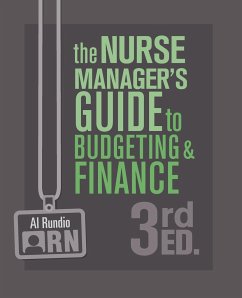
Health Care Budgeting and Financial Management
Versandkostenfrei!
Versandfertig in 1-2 Wochen
71,99 €
inkl. MwSt.
Weitere Ausgaben:

PAYBACK Punkte
36 °P sammeln!
In today's chaotic health reform environment, it is especially important for non-financial health care managers to have a practical guide to the tools and concepts they need to manage their human, supply, and equipment resources. Today's health care managers, frequently, were yesterday's technicians, physicians, and nurses. This puts them in an interesting predicament, since they know the health care side of the business but often lack the financial management skills necessary to create budgets and manage finances in a health care setting. In this guide, William J. Ward Jr. offers easy-to-unde...
In today's chaotic health reform environment, it is especially important for non-financial health care managers to have a practical guide to the tools and concepts they need to manage their human, supply, and equipment resources. Today's health care managers, frequently, were yesterday's technicians, physicians, and nurses. This puts them in an interesting predicament, since they know the health care side of the business but often lack the financial management skills necessary to create budgets and manage finances in a health care setting. In this guide, William J. Ward Jr. offers easy-to-understand explanations of basic accounting concepts, including cash flow, operating cost and cost behavior, revenue and reimbursement, and so much more. Providing clearly presented financial information in the context of health care, Ward's book is a one-stop desk reference that provides practical, useful tools and knowledge that readers can immediately put to use. It will help managers, directors, and clinical leaders who work in hospitals, physician practices, and other provider organizations to effectively manage their financial resources on a day-to-day basis, providing guidance for essential tasks such as preparing budgets, managing their departments, and making decisions around financial issues.













